Want to increase your sales by reaching out to your customers at the exact time they are about to buy?
Then you need to start using behavioral segmentation in your business.
In this article, you’ll learn about
-
How you can reach out to your customers exactly when they need your products
-
How to get more repeat business by understanding when your customers will need your products again
-
Real-life examples of how to use behavioral segmentation to improve sales
Keep reading below.
What Is Behavioral Segmentation?
Behavioral segmentation is segmenting your customers based on how they behave. Then reaching out to them based on that behavior to get them to buy.
Consider Zoey. She's 29 years old and eight months pregnant with her first child. She's getting ready for some of the most exciting and challenging days of her life.
In exchange for a 10% discount on her purchase two months ago, she filled out a short form with her email address and indicated she was six months pregnant with a girl.
Zoey was happy because she got a cute lil’ onesie for her daughter. You were happy because you made her day and you made a sale.
Win-win.
Now that you know Zoey is 6 months pregnant, you can give her content and offers directly related to her situation. For example, you may know that women in their third trimester of pregnancy will start thinking about childbirth and parenting a lot.[*]
How much will giving birth hurt? How am I going to cope with this?
That is when you send Zoey an email like this (and it can be completely automated using an email marketing automation tool): [*]
Hey Zoey,
Congratulations on your eighth month of pregnancy!
You’ve come a long way, and you only have a few weeks left until you meet your daughter. I bet you’re super excited!
As you approach the end of your pregnancy, you might start thinking about parenting and childbirth a lot. Actually having that baby can be a scary thought, as well as thinking about those first few weeks at home.
Well, fear not. We have an amazing bundle that’s going to help you get through childbirth and prepare you to be a great parent.
…
Now you offer Zoey a bundle that will help her, like a bag of hospital essentials and a book to record her daughter's milestones.
We did something special here. And no, I’m not just talking about helping an excited mother-to-be.
We offered Zoey exactly what she needs, because we used behavioral segmentation.
She’s getting ready for a big occasion — childbirth. Your research shows that she’s worried about childbirth and parenting.
Your product matches what Zoey needs right now.
Can you imagine the conversion rate on that email if you send it to pregnant women like Zoey?
It’s targeting and personalization on a different level.
And THAT is behavioral segmentation.
Before we talk about why and how you should use this extremely effective marketing strategy, let’s talk about the five types of behavioral segmentation.
Five Types Of Behavioral Segmentation
Here are the five different ways you can segment your audience. You can use one or all of them to create targeted offers for your customers (like I did with Zoey).
Occasions
You can segment by a personal occasion, such as Zoey's pregnancy, or you can segment by a seasonal occasion, like Christmas or New Year's Eve.
For Christmas, people tend to exchange gifts with their friends and family — the perfect time to use ads promoting your family-oriented gifts. Selling candy? Time to promote your candy canes and holiday-related gift baskets. If you're a clothing company, you can send ads for ugly — but oh-so-cozy — holiday sweaters.
Hilton and Amazon made an offer based on occasion (Mother's Day), where you could use your Hilton points to shop for gifts on Amazon:
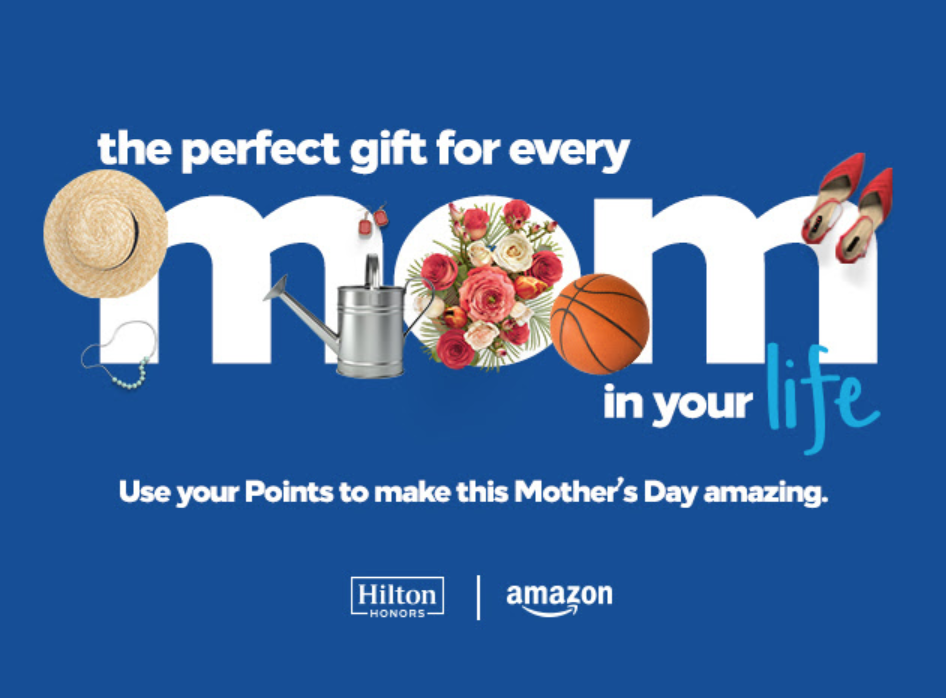
Customer Status
First-time customers will behave differently from your longtime customers, making it important to segment your customers based on their awareness and affinity for your brand. Here are five segments you can use:
1. Unaware Customers
These people don’t know that you exist. Heck, they might not even know that they need your product.
2. Potential Customers
This group knows that they need your product, and are looking at you to determine whether you’re a good fit for them.
3. First-Time Customers
They just bought from you for the first time, and are expecting to be happy with the results.
4. Regular Customers
This segment buys from you often, and is where you get the majority of your sales.
5. Defectors
These are people who have stopped using your product. Their reasoning might be as simple as “I don’t need this product anymore”, or it might be more serious issues with your business, like “there is a problem with the level of service I receive.”
Each of these categories exist in your business, and you’re making a mistake if you market to all of them the same way.
If you have an ecommerce handmade scarf store, someone who stumbles upon your site might not know the difference in quality between a generic factory scarf and a handmade scarf. You need to convince them to consider your product.
If they’re already considering buying a handmade scarf, they wouldn’t be interested in learning why a handmade scarf is better than a factory scarf. They already know that. Go ahead and convince the customer to buy your scarf from your store.
Have they already bought from you? You can use email marketing to send them a deal on buying a scarf from you again.
Have they not bought from you in a while? They might have gotten bored with handmade scarves or defected to another brand. Send them an email incentivizing them to come back — maybe remind them why handmade scarves are awesome, or why your handmade scarves are better than your competitors’.
Key takeaway: Your customers all have different needs, and they’re each at a different stage in their relationship with your brand. Recognize the behavior that goes with each of these five segments, and plan your marketing accordingly.
Benefits
You can also segment people based on the benefits they’re seeking at any point in time.
This is another segmentation method we used for Zoey. We offered her something that would be beneficial to her based on what she was going through in her life at the time.
She’s worried about becoming a parent and about childbirth. We offered her a bundle of supplies for the actual birth and a keepsake journal with parenting advice. The bundle we offered her provided a direct benefit by alleviating her worries and educating her on something that’s very important to her.
I go to a coffee shop every day to work on my laptop. The benefit I get from this is that I get to be around people, and I don’t go crazy working alone in my apartment.
WeWork, a famous coworking space company, could target me on the Starbucks WiFi login page, or by email based on this benefit that I’m seeking. They could partner with Starbucks to promote WeWork memberships, and I’d definitely take notice of these ads because being around other people while working is a benefit that I’m actively seeking.
Last year, Sumo ran monthly webinars that promised to teach people how they could increase their traffic and get more email signups to their mailing list. We got thousands of attendees each month.
How? We segmented our audience based on the benefit they were seeking at the time (more traffic and more email signups), and promised to teach people exactly how to do that.
Here’s what our email copy looked like:
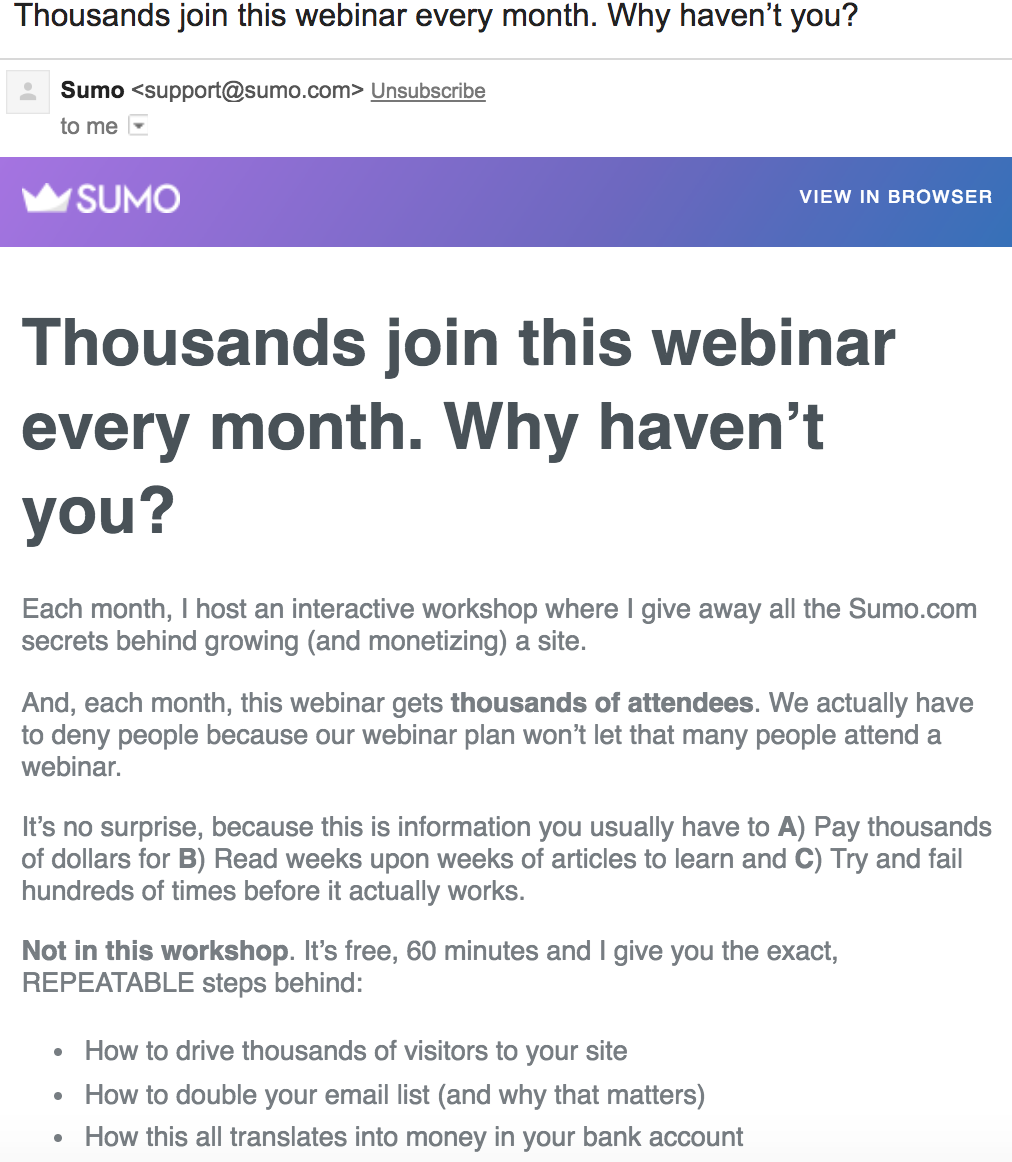
Loyalty
Your loyal customers are the ones that continuously buy from you, bringing you most of your revenue. The hospitality and travel industries often use loyalty-based segmentation.
If you segment your customers based on how loyal they are to your store, or how often they buy from you, you can get a better understanding of them and offer better service to retain them later on.
Look at airlines, for example.
The more loyal you are to an airline, the more benefits you get. You get priority boarding, preference in upgrades, the occasional free trip, priority security checks, and many more benefits — as long as you demonstrate your loyalty to that airline.
This is because airlines want to retain you.
There are two ways you can get more sales:
-
Find brand-new customers.
-
Retain old ones.
Retaining old ones is always easier than finding new ones. That’s why you should segment your audience based on their loyalty to your brand, and offer top-notch service to your most loyal customers.
Another example is hotels. The more you stay at a hotel chain, the more points you can collect, and the more free stays and rewards you receive.
Here’s what HHonors (Hilton’s loyalty program) tiers look like for different levels:
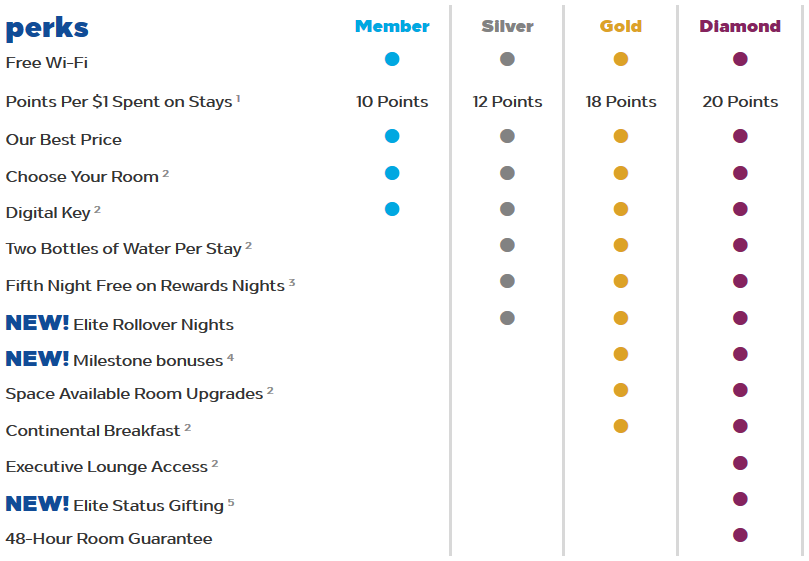
Starbucks offers you free refills for your brewed coffee or ice tea if you spend around $150 every year to reach the gold member level.
Even gas stations have loyalty programs that allow you to save money over time, with the biggest incentives for those who use the brand's credit card or participate in a grocery store's loyalty program.
You can use this no matter your industry — just find a way to reward your most loyal customers.
If you run an ecommerce store, check out this tool that allows you to start a loyalty program on your store.
Customer Status
This is my favorite type of behavioral segmentation. It really dives deep into marketing psychology and helps you retain customers like it’s going outta style.
Assume you sell coffee on your ecommerce store and you have the greatest beans in the whole wide world.
You do some diggin’ around and find that the MondoSumo size bag of coffee lasts approximately 26 days for households with two coffee drinkers. Let’s also assume that your customers love your coffee (they should), and it’s been 20 days since they bought their last bag of coffee from you.
You send them this email:
Hey Josh,
Hope you enjoyed the last bag of coffee you got from us.
It’s been about three weeks since your last order. If you drink coffee as much as we do, you’re probably about to run out.
If you’d like another awesome bag o’ coffee from us, here’s a 10% discount code that’s valid for the next 24 hours.
Knock yourself out with our coffee. (Or, you know, drink it and stay awake instead.)
To good coffee,
Aryo from Cool Beans Coffee Co.
Now, you know from your research that they’re about to run out of coffee. If this customer liked your coffee, and if they were about to get some more, they’re going to jump on this offer and buy it directly from you.
Heck, you can even offer them a monthly coffee subscription in that email.
Figuring out usage habits for the things you sell is extremely valuable data, especially if you sell goods or services that people regularly need.
You sell clothes? Offer seasonal clothes that your audience is most likely to buy soon. For example, start selling swimsuits in March. Got people in Florida or Texas in your audience? They’re going to look for swimsuits even earlier in the year, or year-round. Research your market, and segment as appropriate.
For example, here’s the average temperature graph for Daytona Beach, FL. You can analyze this data to assume when people are likely to start going to the beach. The daily high gets to about 80 around late April, which seems to be a good time to start marketing swimsuits.
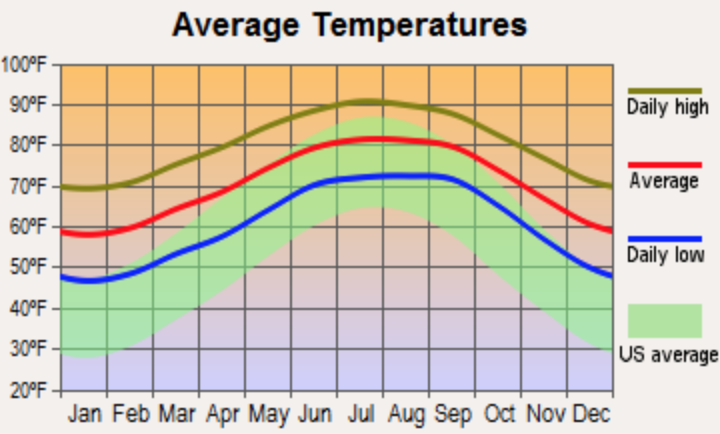
Do you have an app? Figure out when your users interact with it the most, and send notifications to your inactive users at that time to increase engagement with your app.
Are you a marketer for a hair salon? Find out how often your customers get their eyebrows done, or how often they need a haircut. You can use this data to figure out the best time to contact them after their first service.
If you’re on the customer end, you’d be more inclined to take action if you knew you needed a haircut soon, and your regular hairdresser reaches out to you and says “Hey, I've got a Tuesday afternoon appointment open in two weeks, is that still a good time for you?”
That’s the power of knowing the usage and behavior habits of your audience. You can tailor very personalized, highly targeted offers to them and increase your chances of selling to them.
Let’s go back to Zoey for a second. You can do research to see when kids start drinking cow’s milk. A quick Google search shows me that starts at 12 months. When her daughter approaches 12 months, I can send Zoey an email telling her that this is a good time for her daughter to start drinking cow’s milk and move from a bottle to a sippy cup.
I can then offer Zoey a sippy cup, and maybe even offer a discount to increase my chances of closing the sale.
Now, let’s talk about why and how you should use behavioral segmentation.
Why And How To Use Behavioral Segmentation
You’ve just seen how using different types of behavioral segmentation can help you to get and retain customers. Now here are three more reasons why you should use it:
1. Waste Less Money On Advertising
When you know when your customer will want a certain product, you can increase your chance of selling to them by offering them what they need when they need it.
Whether it's a big occasion, or a benefit they need at a particular time, segmenting your customers by their behavior allows you to waste less money on advertising because your advertising efforts will be highly targeted.
Here’s an example: this DigitalMarketer ad is directed towards people who have already shown an interest in Facebook advertising.
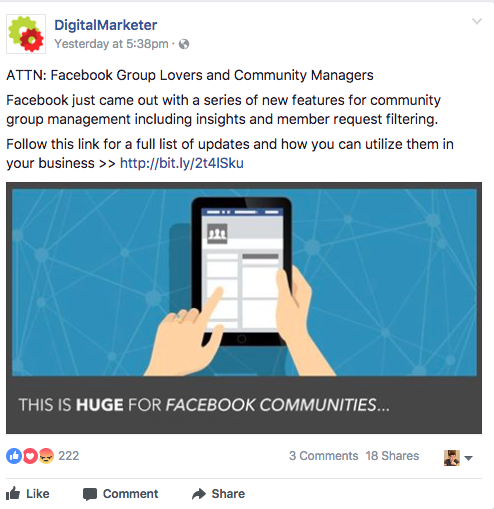
2. More Repeat Business
Behavioral segmentation allows you to understand how your customers use your products, and when they need your services again.
This allows you to retain your customers by sending personalized reminders and offers at the right time.
According to Invesp, acquiring a new customer is five times as expensive as retaining an existing customer. [*]
Here’s another fun statistic: repeat customers convert more often, and they have a higher average order value than first time buyers. [*]
Retaining customers is easier than finding new ones. Knowing when you should try to sell to your customers is key to retaining your customers.
3. Better Understanding Of Your Customers
When you segment your customers based on how they behave, you get a better understanding of them:
-
What they’re trying to achieve by using your services. (e.g. Sumo users want to boost their ecommerce sales)
-
Their buying habits. (e.g. Customers tend to buy more after receiving their paychecks, and your sales go up on the 2nd and 16th of each month)
-
What occasions are important to them. (e.g. Your customers care about Valentine’s Day, and a special promotion might entice them to buy)
When you understand your customers at a deep level like this, you can come up with products/services that they’re more likely to buy.
Key Takeaway: When you understand a customer’s behavior at a deeper level, the products you offer them will be spot-on in solving their problems.
When you know what your customers want, you can help them by showing them the exact products/services they’re looking for. And when you help your customers, you make more money. It’s a win-win.
Here’s how you can use behavioral segmentation for four different industries.
How: Ecommerce
If you’re in ecommerce, you can segment your customers based on a lot of different behaviors.
-
Usage habits: What time of day, or day of month are your customers most likely to buy from you, or engage with you? Figure it out, and send your emails at that time.
We do this at Sumo – our customers tend to open our emails more at 6 am CT, and that’s when we send our emails.
-
Occasions: Is Valentine’s Day coming up? Can you sell anything that’s relevant to it to attract customers who are interested in this occasion?
Here’s a Valentine’s Day promotion by Forever 21:
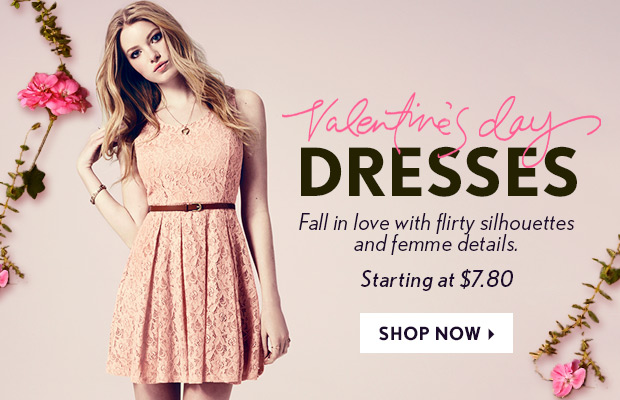
-
Loyalty: Offer your customers a loyalty program, and reward your more loyal customers with awesome benefits for buying from you instead of your competitors.
Here’s an example by Gap – they want you to keep buying from them, not anyone else!
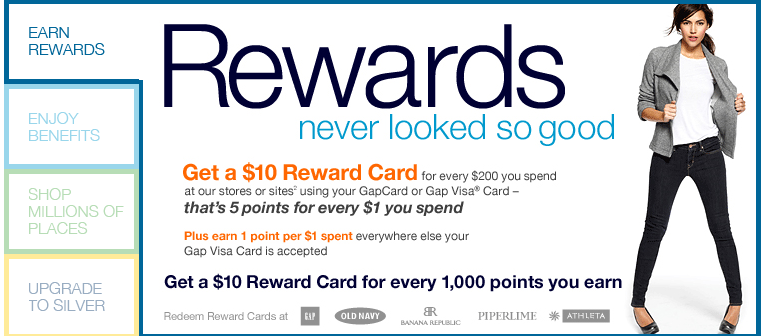
-
User status: How well acquainted is your customer with your store? If they’re a first-time buyer, you can offer them a small, useful item if they complete their first purchase. If they’re a regular, you can sell them a membership that will allow them free shipping for each order, just like Amazon Prime. If they’ve already subscribed to your mailing list, you can send them offers on items they’ve shown interest in.
Here’s an example from KopywritingKourse.com – you see this page the first time you enter the website. Notice how it’s aimed towards first time visitors.
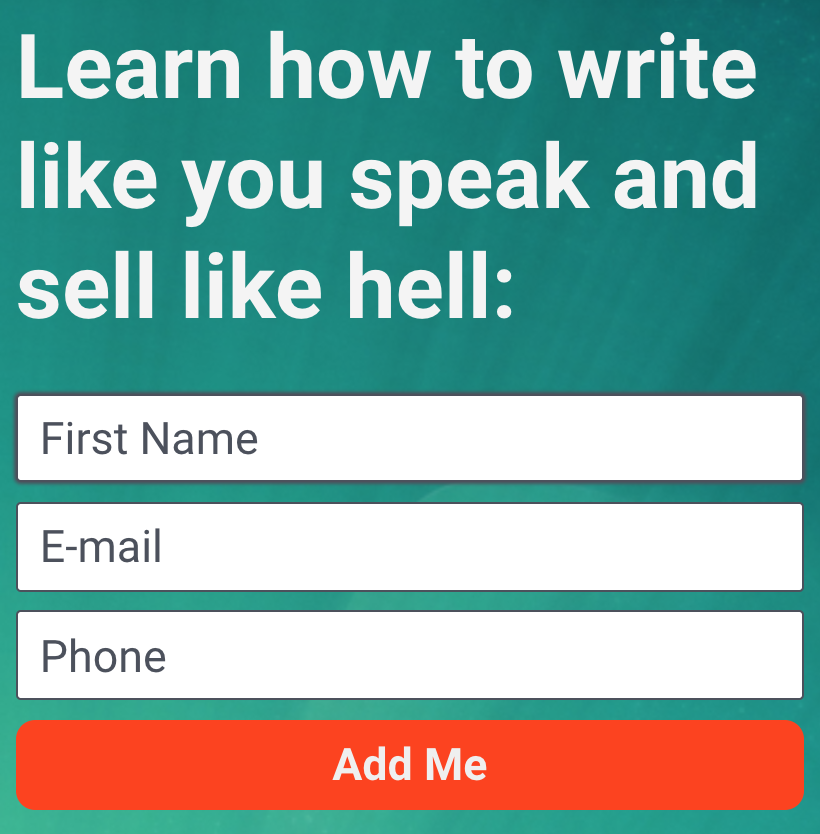
-
Benefits: You have a Shopify store that sells homemade scarves. What benefits matter to your customers? Fashion? Keeping warm? Personalized scarves?
Find these benefits by asking your customers what they’re really looking for and analyzing their behavioral data. This way, you can sell products that they’re more likely to buy.
Example: the guys at Freshly definitely know what benefit their product provides to their customers. Here’s a Facebook ad run by them:

The possibilities are endless. Look deep into customers’ behavior, and look well. Try to understand why your customers are behaving the way they are behaving, and give them more of what they want.
How: Software as a Service
Say you run a software business, like Sumo. Your target audience is ecommerce store owners, and your software helps them by growing their email list and doing better email marketing. What benefit drives your customers? Getting more sales for their ecommerce stores.
You write articles that allow them to become better marketers, so they can get more sales for their ecommerce stores. (hint hint: you’re reading one.)
You set up a mailing list and send them these articles when they come out to build a better relationship with them, like this:
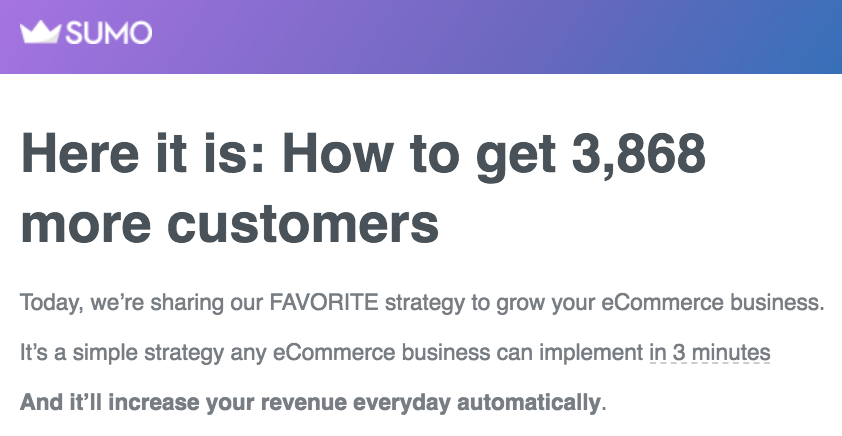
Let’s look at usage habits: What time are they most likely to read these emails? You look at your open rates during different times of the day, and that’s when you send those emails.
How do your customers use your products?
For example…
-
Calendly. Users use Calendly for the benefit of convenience while scheduling meetings.
-
Uber Eats. People like the convenience of having food delivered to their homes, even from places that don’t usually deliver.
-
Instagram. Users mainly use Instagram to connect with their friends, share their memories, and browse entertaining content when they get bored.
You analyze those uses and build a better product. That’s what we do with Sumo and that's why we’re increasing our focus on ecommerce.
You reward loyal customers with a discount if they buy an annual plan… and you do many, many more things based on your customers’ behavior.
This is all behavioral segmentation.
How: Brick And Mortar Businesses
You have a fancy Italian restaurant. Nice.
When an occasion like Valentine’s Day is coming up, you run a special promotion, like this: [*]

You’re directly catering to your audience now.
See how they’re offering a great deal for couples? Couples are looking for a fun, romantic night out, and they don’t want to break the bank. Perfect occasion for a deal on this.
You can run different, more efficient campaigns to different customers, all based on their behavior.
Imagine you got the email address of someone on a date. You can send occasional promotions for a “couple's night” meal on a slow weeknight, and they'd be more likely to come back than if you picked a random person who ate at your restaurant.
How: Bloggers
You run a fitness blog. You can segment your audience based on what they’re trying to accomplish. What benefit do they get from your products?
-
Some of them want to have a more impressive body.
-
Some of them want to lose weight.
-
Some of them want to be more healthy in general.
You can have different articles on your blog that cater to these three different reader types, and you can set up your email collection tool to put subscribers into different lists based on which article they signed up from.
If they subscribed from a weight loss article, market weight loss stuff to them. They want to be more healthy — that’s the benefit that drives them.
If they subscribed from a bodybuilding article, they probably want to look better and are a little more competitive.
If they subscribed from an article about how running is great for staying healthy, they probably just want to be a little healthier, and maybe get into the habit of running to do that.
Different needs, different wants, different products.
Market accordingly.
I signed up for a blog a couple months ago when I was looking for a way to increase my job prospects as a web developer. I found a blog called Simple Programmer, and the owner of the blog, John Sonmez, claims that documenting your projects on a personal blog is impressive when you’re looking for a software job.
Here’s an email you get when you sign up for the Simple Programmer’s “starting a blog guide”:
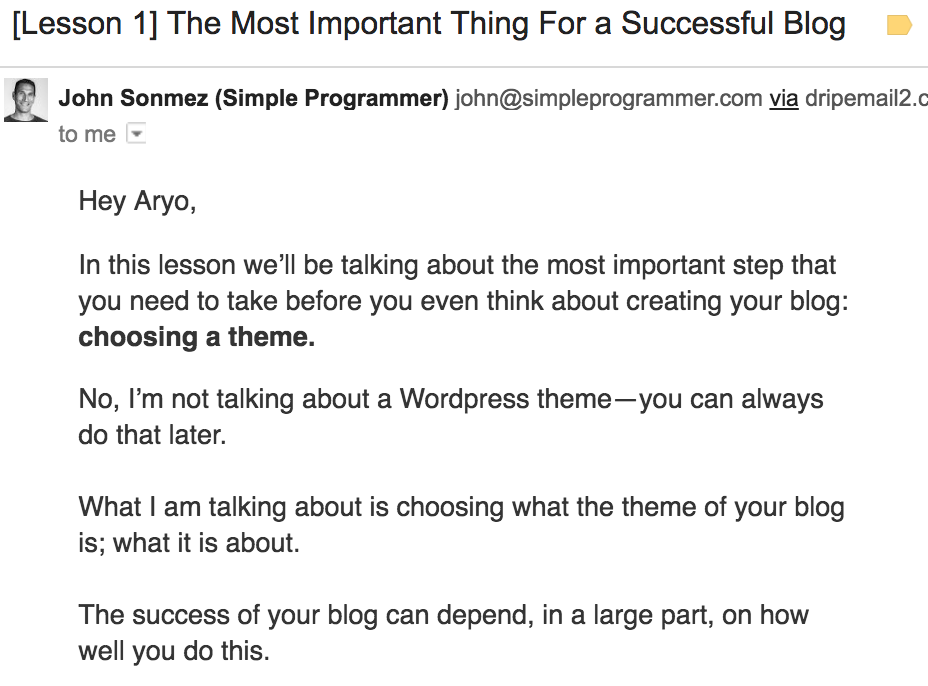
I signed up because I was looking for the benefit of becoming a more successful developer. John Sonmez promised that if I signed up for his newsletter, I’d learn how to start a proper blog and increase my job prospects. So I signed up.
I could go on and on about how you can segment your audience based on their behavior for different industries, but you get the gist of it.
Things To Watch Out For
Now, behavioral segmentation is great, but you need to watch out for some things when you’re utilizing it.
First of all, you can’t be too broad and you can’t be too specific.
Either will be a waste of time for you.
In the Zoey example above, if you just targeted “pregnant women” instead of “pregnant women who are in their third trimester”, your conversion rate would be lower.
If you just targeted “women”, you’d get a much lower conversion rate. Why would a random, non-pregnant woman need a pregnancy book?
Now, there’s a lot of targeting that you can do, especially with all the options available in today’s digital marketing world. The issue is that you may not have the resources to create separate ads or products to every single little audience segment.
Go for the lowest hanging fruit. Don’t waste your marketing efforts on super-niche audiences. Niche is good. Super-niche? Not so good.
The point of behavioral segmentation is to understand your customers better, and then market to them better.
No reason to overcomplicate things. Try to understand who makes up the majority of your sales, not the minority that only occasionally buys from you. It simply isn’t worth your time.
The Pareto Principle [*] says that 80% of your sales come from 20% of your customers.
Understand that 20%. Understand why they behave the way they behave. Understand them so well that even they’re surprised when you offer them products that they desperately need.
Then double down on it. Triple down on it. Understand them better, and sell people what they want. Your wallet will thank you.
Lastly, I want to give you four tips that you can start implementing today to get started with behavioral segmentation. Hope this gives you ideas for your own business.
Four Ideas to Start Doing Behavioral Segmentation Now
Gather More Data
Analyze your customers. Ask your customers.
Ask your customers why they choose your brand. Why they buy certain items. Ask them who they are.
Remember Zoey? Gathering data like that isn’t that hard, you just have to ask.
Offer a 10% discount code if they fill out a very short survey, and ask them their age, their gender, their birthday — after making sure you're meeting any regulations regarding personally identifiable information.
Here’s an example by Gap – notice how they’re offering a 20% discount in exchange for a survey.
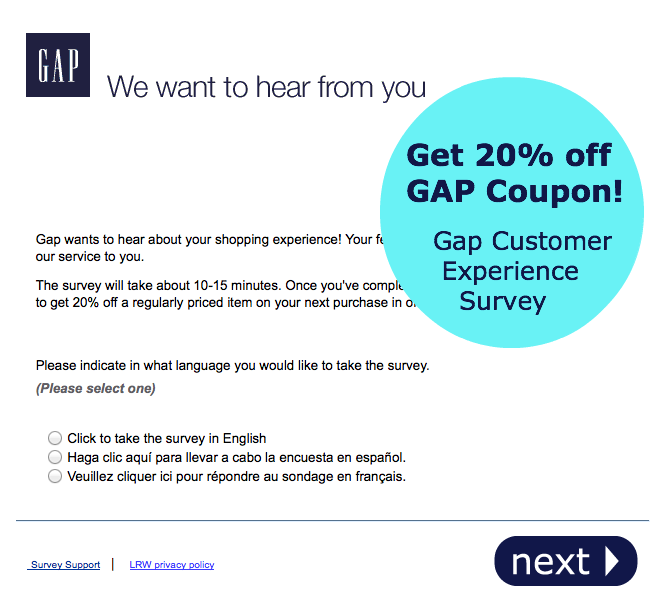
Ask information relevant to your business.
Test and analyze your emails. When do they get opened the most? What copy works better? A/B test things and see what works best.
The guys at GrooveHQ decided to get to know their customers better, and they emailed every customer asking to talk.
Their CEO’s inbox shows just how effective this is (image courtesy of GrooveHQ blog): [*]
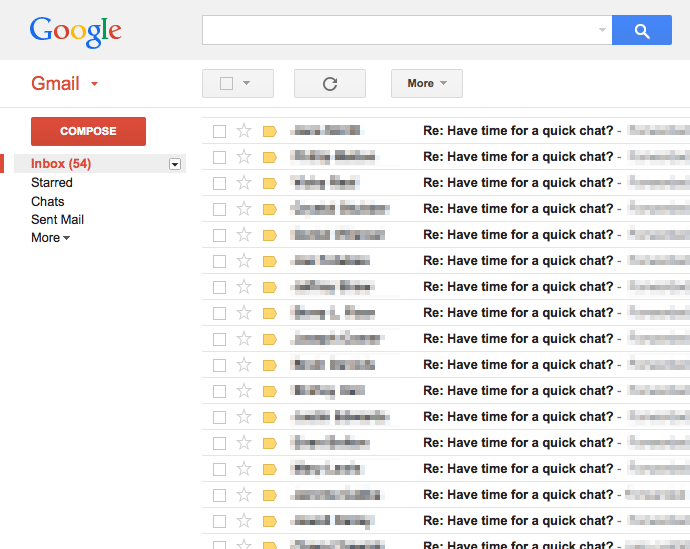
Once you have more data, use the information in this article to understand your customers better, and start personalizing your marketing by segmenting your audience based on their behavior.
Calculate When Your Customer Will Need Their Next Fix
If you’re an ecommerce store selling coffee, like in the example above, calculate when your customer is going to need their next bag.
How do you do this? Again, you ask. Offer to talk to a customer on the phone in exchange for a free bag of coffee. People love companies that engage with their customers in this way, as you saw above. Personalization is awesome!
Once you know when your customers will need their next fix, send a reminder ahead of time.
You can do this with other businesses.
Are you a restaurant that offers takeout or delivery? Send your customers a text in the evening and offer them something (an appetizer, x dollars off, etc) if they place an order in the next 15 minutes.
Do you run a clothing store? Figure out how often certain segments of your audience shop for clothes, and find ways to reach your audience when that time period is near. Chances are they’re already thinking of visiting you again — close the sale by taking initiative.
Run Promotions For Special Occasions
If you have an ecommerce store selling custom coffee mugs, offer limited-stock mugs for holidays or special days.
If your top-selling mug is one with a cute frog on it, and Christmas is coming up, create a mug with the same frog but with a Santa hat on it. Go ahead and send an email about this limited edition mug to everyone who bought your froggie mug before.
I’d buy that mug. I’d buy that mug in a heartbeat.
Here’s an email sent by Amazon a week before Thanksgiving: they know what their customers will need soon.
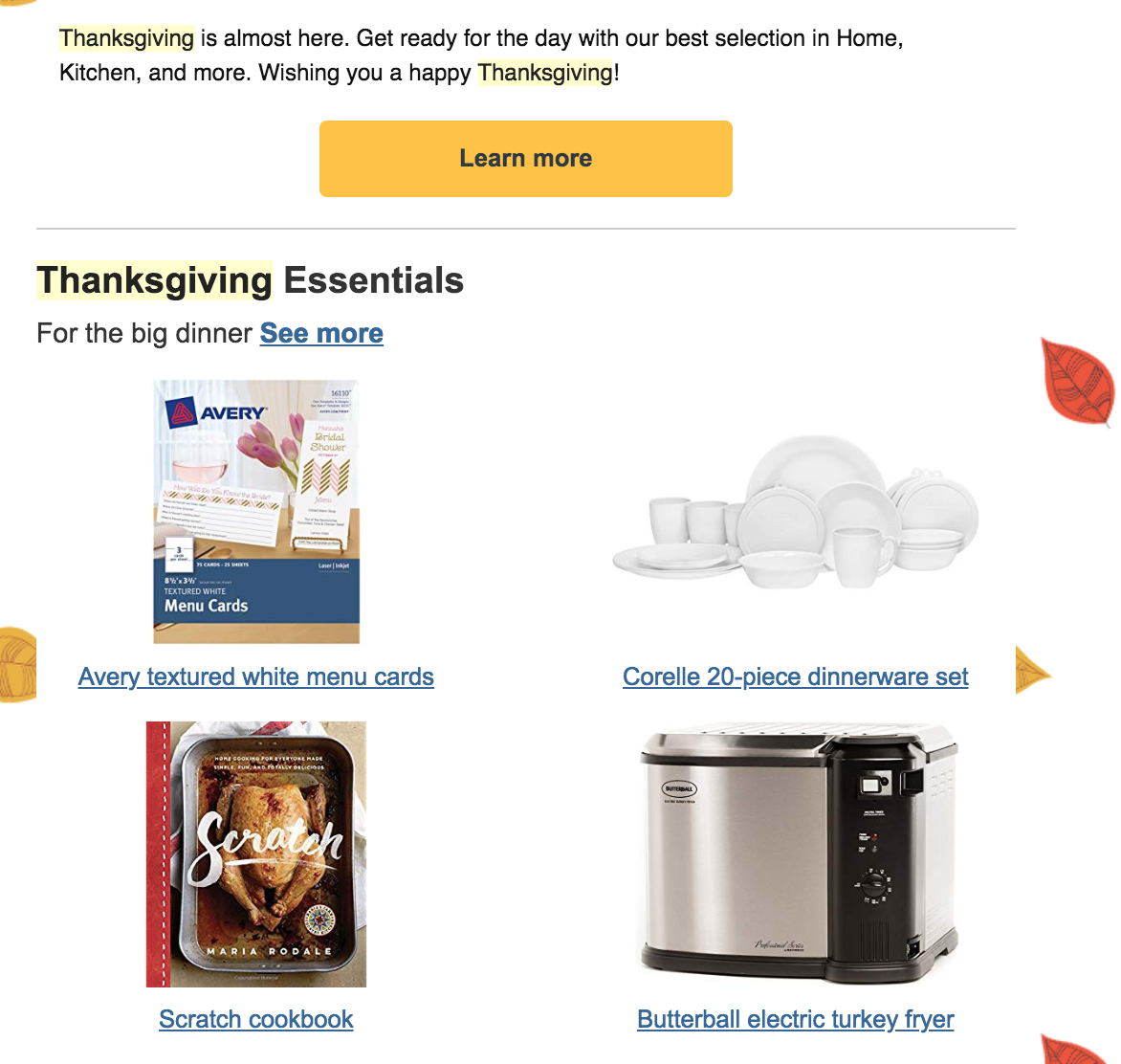
St. Patrick’s Day is around the corner, and you run an ecommerce store that sells handmade bracelets. Come up with a green bracelet with a four-leaf clover on it, and sell it to your customers.
Let’s amp that up a little more and send a custom email about this bracelet to every customer of yours from Massachusetts. Run an Instagram ad for people in Massachusetts. You know, St. Paddy’s is kind of a big deal up in Massachusetts, especially Boston.
You need to understand your customers’ behavior, segment them based on this, and sell to them accordingly.
If you’d like a worksheet that you can fill out and that will help you realize some super-custom, awesome things you can do for your customers, click the button below.
Get The Behavioral Segmentation Worksheet
Tailor Your Products To Your Customers’ Needs
Once you have more data about your customers, such as the benefit they receive from your products or their usage habits, or when they want to purchase more from you, you can fine-tune your products to become a household name for your customers.
Do your customers buy a service from you every two weeks? Offer packages that give your customer the service every two weeks, for a discounted rate. This ensures your customer’s loyalty to your brand, and that they don’t wander off.
Do you run an ecommerce coffee store, and your top customers are coffee connoisseurs? Come up with a coffee tasting bundle with bits of every blend of coffee you have, and offer it to your top customers.
Do you have a business that can be a commodity, and you want your customers to keep coming back to you? Build customer loyalty by creating a loyalty plan and offering, for example, one spa treatment for free after five treatments.
Are your top customers professional men between the ages of 27 and 32 who are in a relationship? Do you run an online tie store? Is Valentine’s Day coming up? Send them an email two weeks before Valentine’s Day, and offer a rose-red tie to “impress their partner on Valentine’s Day.”
That’s what we do now. Again, Sumo has been focusing more on our ecommerce customers, simply because we understand our customers better now.
Take a look at our last six articles: they're all about ecommerce.
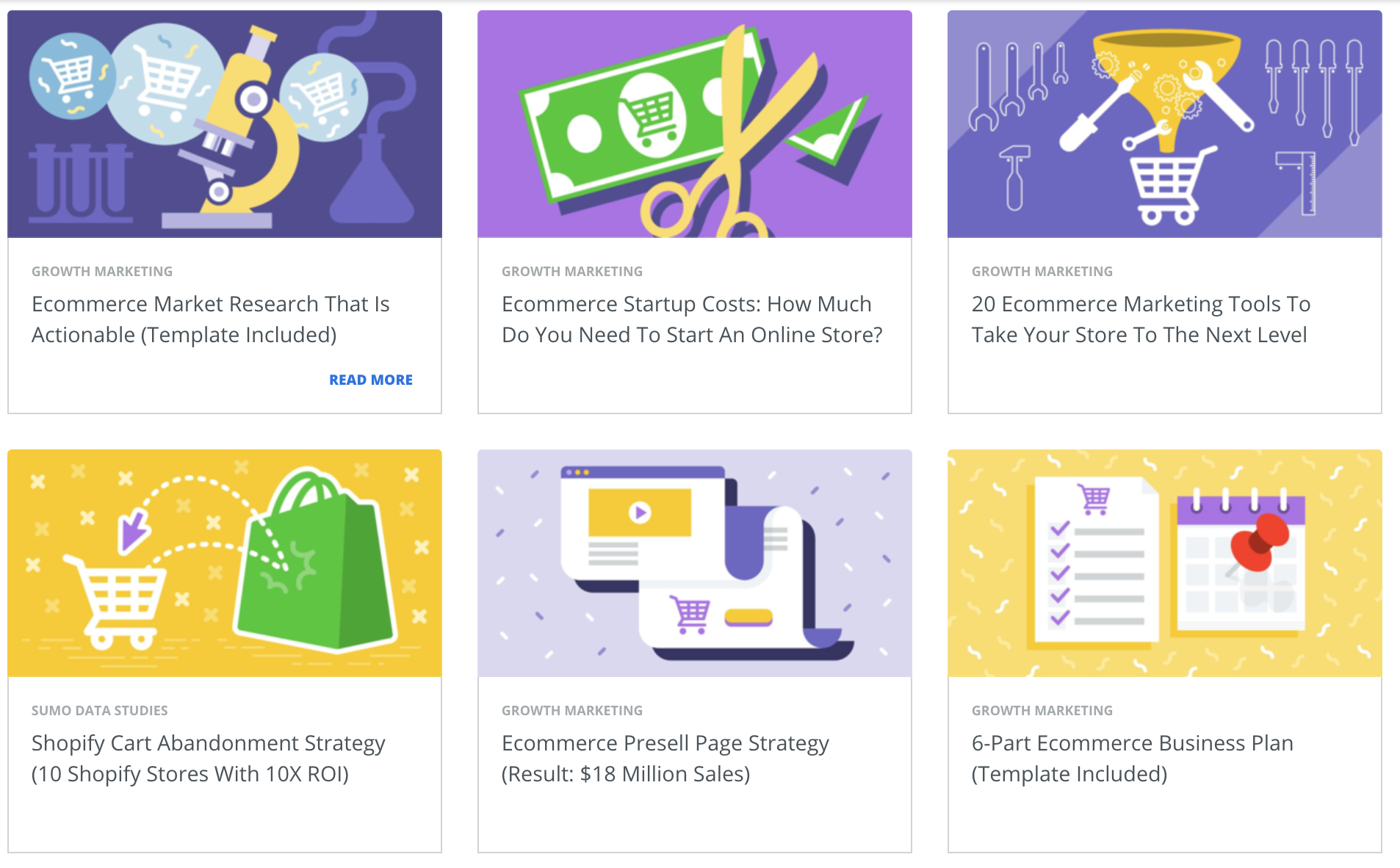
Why? Because our customers are mainly interested in ecommerce.
The possibilities are endless. You can do so much with behavioral segmentation, and it all goes through one thing:
Understand your customers. Ask them questions.
I’ve also come up with two specific hypothetical examples, so you get a better idea of how you can utilize behavioral segmentation to sell better.
1. Nail Salon
Let’s assume that you do marketing for a nail salon where you craft the most fabulous nails in the world.
I researched the regular clientele of nail salons in my area, and here are some facts that I found:
-
Customers want the convenience of not having to deal with maintaining their nails. (Benefit)
-
The average customer gets her nails done every three weeks. This is necessary for proper maintenance of their nails. (Usage habits)
-
The busiest day for customers aged 18-23 is Saturday. (Usage habits)
-
Not every nail salon is as good as the other. Nail art isn’t a commodity — people like to find a good salon and stick there.
Knowing this data about your customers, you can segment them based on their behavior.
You can:
-
Offer other services at your nail salon that would help your customers be more beautiful. Facials, makeup, silk lashes. Things that appeal to your customers’ desire to be more beautiful without having to spend too much energy.
-
Before your customers leave the salon, ask if they want to schedule something for three weeks later, as that’s usually when they’ll need to come.
-
Call customers aged 18-23 who haven’t come to your store for a while, and ask them if they want to come in for an appointment during the week, and give them a discount for a weekday to fill up your less busy days.
-
If a customer comes back, that means that they’re happy with your services. Attempt to sell them on a discounted three-month package, for example, to guarantee that they stay with you in the long term.
You can look at other data and come up with a plethora of ideas like the ones listed above.
2. Ecommerce Backpack Store
You sell handmade, sturdy backpacks on your Shopify store. You know that your customers fall into these groups:
-
Don’t buy backpacks often. They want to buy one and use it for a long while. (Benefit)
-
Are mainly people with old backpacks who want something new. (Occasion)
-
Are mostly students and startup employees, and they carry their laptops in their backpacks all day. (Usage habits)
Here’s what you can do to sell more, and sell more effectively:
-
Make and market your backpacks as “extra sturdy.” Promise a 10-year warranty, and stand behind the warranty.
-
Use copy like “is your backpack getting old?” in your ads to attract more attention from potential customers.
-
Market directly to college students. Put fliers around at colleges, target students on Facebook/Instagram ads, offer educational discounts to people with .edu emails.
-
Send startup founders/coworking spaces emails about offering a promotion if they buy a backpack for each of their employees, and offer to stitch everyone’s individual name and the startup’s name on the backpack. Startups love chemistry-raising stuff like this.
How personalized is all this stuff? Behavioral segmentation is awesome.
Conclusion
We’ve gone through a lot of information, but the bottom line is this:
Behavioral segmentation is using your customers’ behavior to segment them into different audiences, and then selling to them more effectively.
It is an extremely powerful marketing strategy that allows you to create greatly personalized offers for your customers.
It helps you retain your customers and allows you to understand your audience better so you can better connect with new ones.
Thanks for reading. Hope you find this useful and can utilize behavioral segmentation in your business.
If you want a worksheet that you can fill out now that will help you understand your customers better, and figure out super-personalized things you can do for your customers right now, click the button below and get the Behavioral Segmentation Worksheet.
Add A Comment
VIEW THE COMMENTS